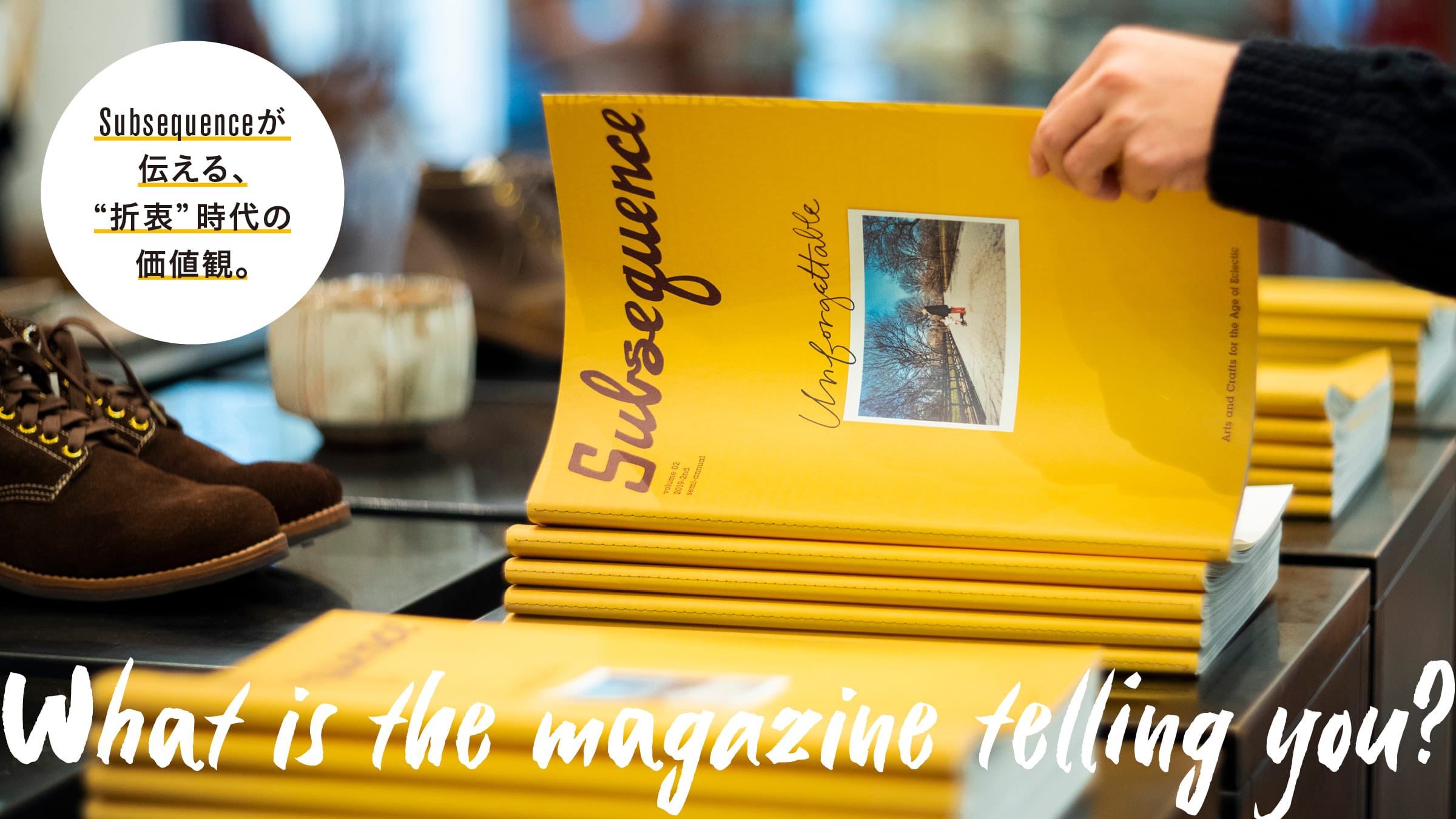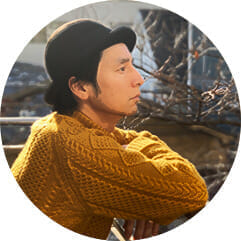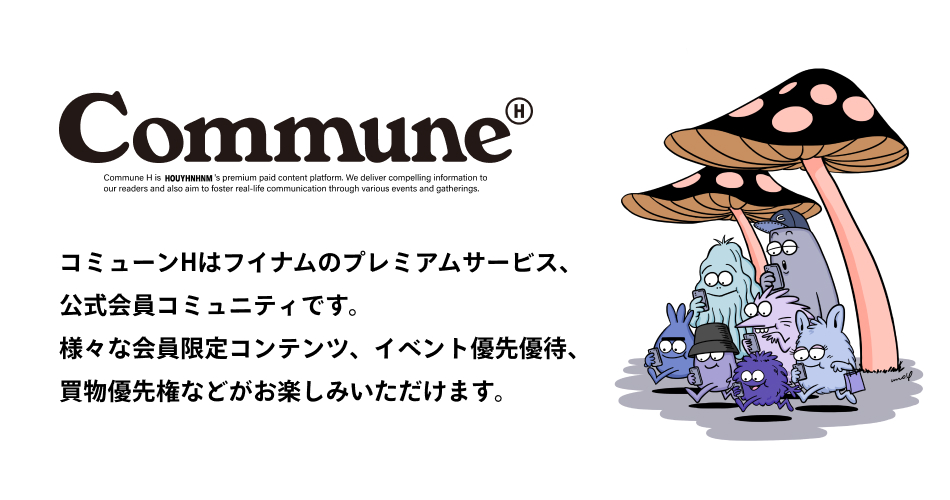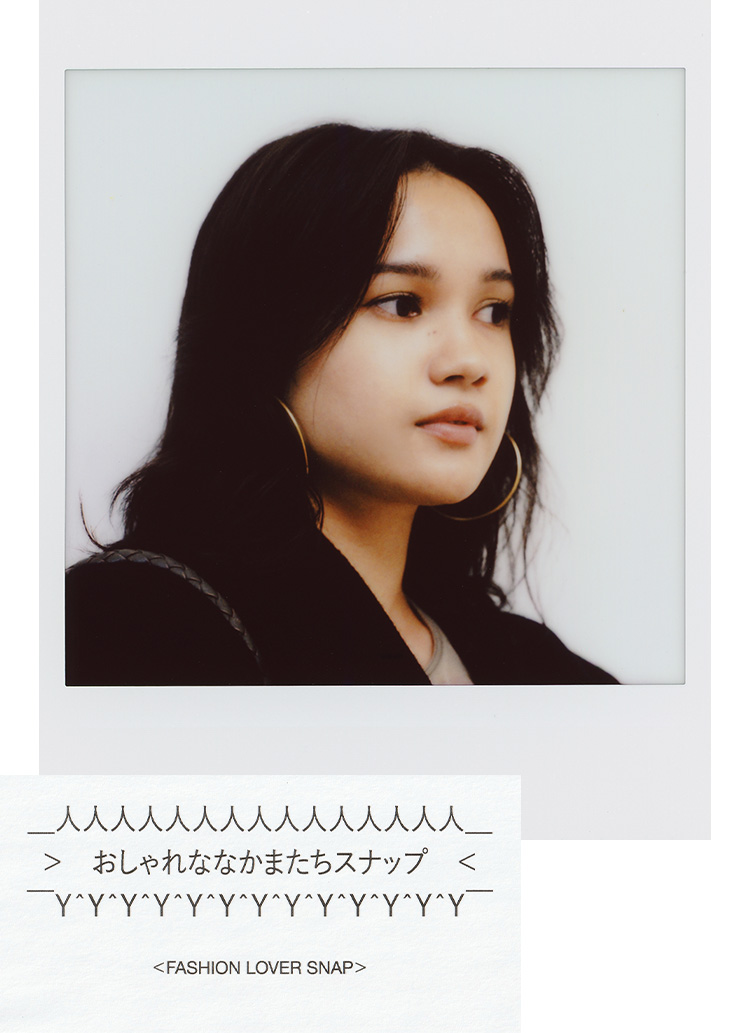PROFILE

Editor, born in Osaka in 1975. . He has edited and written for magazines "BRUTUS" and "POPEYE" (both for Magazine House), the in-flight magazine "Tsubasa no Okoku" (ANA), and "Kogei Seika" (Shinchosha), as well as books and the web. His recent editing work includes "[Hosono Kanko 1969-2019] Haruomi Hosono's 50th Anniversary Exhibition Official Catalog" (Asahi Shimbun Publications). . He is also the author of "I want to go to Alaska" (co-authored with Gentaro Ishizuka, Shinchosha).
. to a book that conveys the values we think are good.
You have just completed the long-awaited second issue of "Subsequence".
Ide:I had heard from Hiroki Nakamura, the creative director of VISVIM, that he was interested in creating a magazine. I had worked on Mr. Nakamura's Series for "POPEYE" and had written articles on the brand, and we had talked about the best way to create the magazine. We agreed that it would be a good idea to start out on a scale that would be within our means, and I was assigned to edit the magazine.
From the beginning, Mr. Nakamura wanted to create a magazine that would not be a PR magazine for a so-called apparel brand or one that would push VISVIM's products to the forefront, but rather a medium that would broadly convey the values that the company considers in its daily activities. So even though "Subsequence" is a magazine published by VISVIM, there are only two spreads of advertisements and only a few pages that feature the brand's products.
Until then, "VISVIM" had been introducing on its website and in other publications articles about traditional crafts with various cultural backgrounds and handicrafts, and other sites where the brand sympathizes with them. There is a desire to pass on the value of creative cultures from around the world, including arts and crafts, by highlighting them and conveying the thoughts behind them. . This is also what Mr. Nakamura is thinking about through the manufacturing of "VISVIM. . With this in mind, the starting point was to compile the content that had been uploaded and make it into a book.

What kind of magazine did you have in mind?
Ide:I had heard from Mr. Nakamura that he liked a Japanese graph magazine called "Home Life" published in the early Showa period, so I had an image of a large-format sundry magazine that dealt with culture and lifestyle. I myself like the early editions of "COLORS," a magazine published by the apparel brand "UNITED COLORS OF BENETTON," so I wanted to use it as a reference in terms of the relationship between the brand and the medium.
Japanese magazines are detailed, unique, witty, and interesting. Compared to the rest of the world, Japan is a uniquely developed culture, and I felt a common desire to preserve it. I have been working in the field of magazine production for some time now, and I would like to pass on some of these skills through my work on the magazine.

What do you think of the tag line "Arts & Crafts for the Age of Eclectic"?
Ide:In Japanese, it means "arts and crafts of the 'eclectic' era," and I find it interesting to mix cultures from different regions and eras. I think it is interesting to mix cultures from different regions and eras. "Arts and crafts" may be a bit limiting, but I see it broadly as "culture related to creativity," which can include, for example, music and food.
I believe that behind the development of creative culture is a history of mixing something with something else, referencing the past, and influencing each other with things from different regions. For example, the rock group "Happiendo," formed and active in the early 1970s by Haruomi Hosono, Eiichi Otaki, and others, was Japanese performing rock, a music born in the West, in Japanese, and this created a new worldview that did not exist in the West. Rather than arguing over what is original or who owns rock music, I would like to focus on the interesting eclectic creations that emerge when various influences are mixed together in this way.


Ide:Each individual human being is influenced by various cultures and develops his or her own individuality. Thinking positively about this, I would like to feature interesting people, things, and events in the magazine from a broad perspective, without being bound by categories such as generation, gender, race, or nationality. . I think this is also true of VISVIM's approach to craftsmanship.









